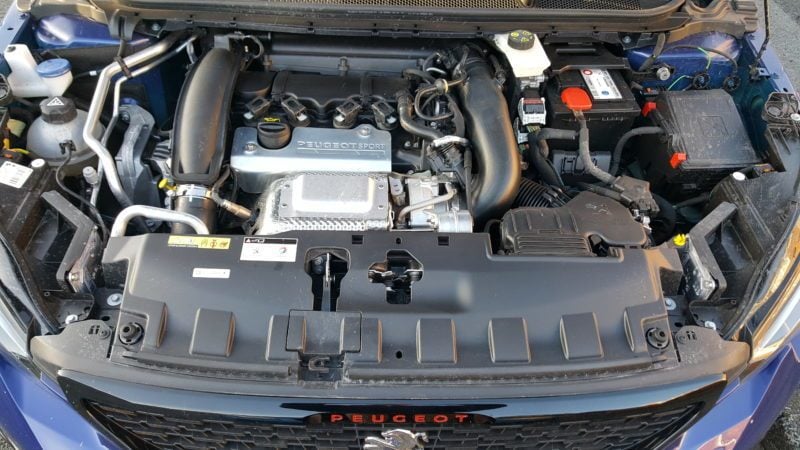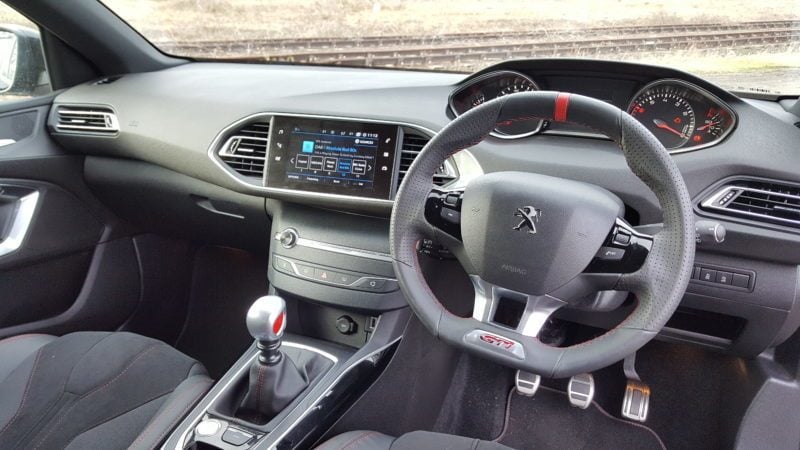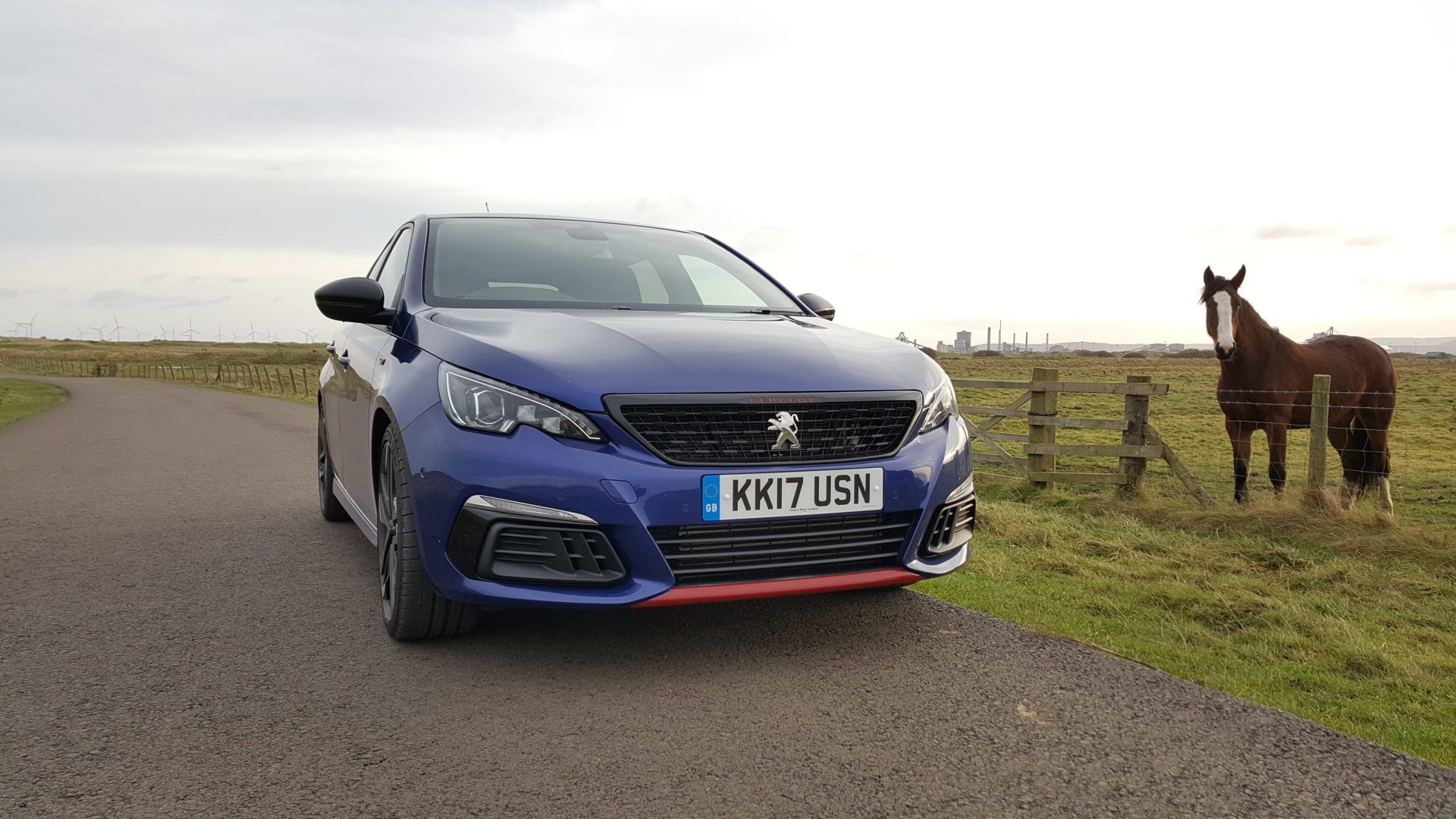Peugeot is on a bit of a roll as of late. It was a company that, back in the 1980s, was known for its sporty versions of regular hatchbacks. The 205 GTI is pretty much an icon of its time, but the company also made cars like the 309 GTI (which was better) and the 405 Mi16.
That era also saw Peugeot going rallying. The mid-engined 205 T16 won two world rally titles, and the larger 405 T16 blitzed Pikes Peak, setting a record and starring in the famous Climb Dance film.
It lost its way a little in the 1990s and 2000s. Bar the occasional hit, it churned out a range of unmemorable cars with a focus on filling niches. Anyone remember the 206cc and 307cc?
But it’s a brand that seems to be on its way back. The RCZ was an excellent car, and the sportier RCZ R even more so. We tested the 208 GTI before Christmas, and decided it was our favorite car in the sector. This week we’ve been trying out the larger, and more powerful, 308 GTI.
Couldn’t decide what color it should be then?
This interesting color scheme is part of the Peugeot Sport branding. You can get the 208 GTI in a similar—albeit black and red—split color if you like. It’s a £775 optional extra mind you, but when your have the option of an interesting paint color on a sporty car why wouldn’t you pick it? Although you may regret the decision if, for example, an ignorant and inattentive parent in the car park of your school run slams her door into the side of your car…
The 308 GTI is also available in plain blue, red, white, black or gray, if you worry about things like “residual values”. If that’s the case though, you may as well just buy a Golf GTI instead.
What’s so special about it?
Firstly, don’t confuse this 308 with the old one. Peugeot decided to streamline all of its names worldwide, and the new system means that if it has a medium-sized family (3) car (0) for major markets (8), it calls the car 308. That worked well for models that were naturally evolving from the previous “7” generation to a new “8” one, but the 308 happened to already exist. If you can remember the old 308, forget about it – this is a completely different car.
The GTI bit is the special part though. It means that the 308 gets a high output version of the 1.6-liter turbo petrol engine, just like the 208 GTI. However the 208 only gives you 205hp; the 308 packs in a remarkable 268hp. All of that power hits the floor through the front wheels alone.
If that sounds familiar, it should. The 308 GTI essentially uses the RCZ R mechanicals, from the engine and gearbox to the Torsen LSD. RCZ R performance, five-door family hatchback body… sound special enough yet?

270hp and front-wheel drive?
It would have sounded ludicrous just a couple of years ago, but it’s not like the GTI is even that unusual now. There’s a front-wheel drive Golf with 300hp, a Leon running similar figures, the Civic Type R, the Renault Megane… Indeed Peugeot’s own RCZ R trod this path first, and it worked really well.
There’s a slightly different tale here though. The regular RCZ was an exceptionally stiff car and the 308 is… not. Despite a lot of work with the suspension, the 308 GTI isn’t quite as good under acceleration and it’s really not that hard to spin the front tires up even in third gear.
That said, the differential does an absolutely stellar job of keeping everything in check. Just like the 208 and the RCZ, the 308 GTI is never properly wayward. You can keep the loud pedal pegged into the carpet and just let the diff work its magic. The steering can get a bit light in the process, but if you trust in the Torsen it all works out in the end.
As suggested above, Peugeot Sport has waved its magic ratchet spanner at the GTI. It’s about half an inch lower to the ground, with stiffer springs, firmer dampers and more solid bushings. Peugeot’s also wound on some more camber and widened the front track, by around half an inch. It all has a pretty dramatic effect on how the 308 takes bends. It lacks a bit of that rear-end playfulness you used to get from hot hatches in this class, but where the front leads the back follows. We’re not sure what it would take to get the 308 out of shape, but it’d probably need some proper lunacy.
Peugeot’s retained a six-speed manual rather than one of the popular flappy-paddle, dual clutch affairs you’ll find elsewhere. While that means you’re missing out on a couple of tenths of performance each shift, it sticks to traditional Peugeot values of driving feel. It’s perhaps not up with the best manuals, but it has a nicely judged throw.
Despite the typical “lower and harder” approach to sporty suspension, the GTI’s ride quality doesn’t suffer. The smaller and lighter cars in the range very much feel like they ride the bumps from crest to crest, but the 308 is more supple and forgiving. It’d be an easy long distance family car, if you can coax the fuel economy up into the 40s. Stay away from the sport mode button, if that’s your goal.

What about the inside?
The 308 GTI uses the same “i-cockpit” layout as other modern Peugeots. This means a tiny little steering wheel that sits below the instrument cluster, and a touchscreen in the center console. On the 308 range, the screen is angled slightly towards the driver, which is a simple solution we wish more manufacturers would pay attention to.
That small wheel can cause some annoyance when it comes to finding a decent seating position in the 308. It’s better than in its smaller sibling, but sorting all of the various adjustable bits so that everything is just so will take a little while.
We also found a bothersome aspect of the touchscreen. On the one hand it’s a nice, clear and easy to use system, just like its junior sibling. However Peugeot’s riding the same wave so many other manufacturers are on these days of reducing button clutter. You’ll not find many things to press in the center stack (and the fact there’s a volume control present but it’s off to one side is maddening) and that, sadly, includes climate control features. Instead Peugeot hides these inside the touchscreen menus, as with the similar system on the Citroen C4 Cactus.
It’s not too much of a chore to get to—there’s a top menu button for all functions present at all times—but a traditional heater control is easier and quicker to use. It’s not like the design of the center console is improved by the lack of buttons either. It just looks like a four-inch high chunk of bare plastic with a volume knob on one side…
Generally, perceived quality is high. There’s a lot of soft-touch materials in the cabin, and splashes of color here and there. The lower you look, the less impressive it gets, but this is fairly standard practice and you won’t find many cars where materials only service engineers will ever touch are soft and forgiving. The red center marker on the steering wheel is a nice touch, and the GTI uses the same gear knob as the 208 and RCZ. It’s a nice, consistent marker that this is a sporty Peugeot.
The accommodation is good throughout, and there’s plenty of storage space around the cabin. The exception, as usual with PSA cars, is the glove box. On RHD cars like ours, this sits where the fusebox is located and you’ll struggle to get a CD case into it. This won’t be a problem in LHD markets.

Who is the 308 GTI for?
It’s a car for the speed enthusiast with active loins.
The GTI essentially loses nothing of what the 308 range is about. That means it’s a relatively comfortable, well-equipped family car, with room for spouses, 2.4 children and all the bags from a weekly family grocery shop in the trunk. Or a load of flat-pack kit from Ikea. It’s clearly a car geared around family life.
With the clear performance orientation and the race car paintjob, Peugeot is targeting someone who likes to not only go fast, but look and sound like it even when they aren’t. Crucially though, that’s not the car’s raison d’etre; it’s unlikely someone will buy this as a performance car as a primary concern. It’s more a family car that happens to go like stink.
What would they buy instead?
As we intimated earlier on, there’s quite a few alternatives here. Perhaps the closest rival would be the Volkswagen Golf GTI. Although the regular Golf GTI is a little down on power, even in 243hp GTI Performance guise, it’s the nearest match for the 308 GTI. It has the same recipe, of a family-oriented car that also happens to go fast, rather than a performance car that just happens to have five seats. It’s the car Peugeot benchmarked, and you can see why.
SEAT’s Leon—a close cousin of the Golf—is another rival. The 297hp Cupra 300 comes in the same five-door style, with similar pricing, performance and a manual gearbox. Elsewhere, you may look at the Vauxhall Astra GTC VXR or, when Renaultsport finally releases it, the next Megane RS.
The Civic Type R is another likely cross-shop, but this gets well into the territory of being a performance car first and family car second. You could say similar about the four-wheel drive Golf R and Focus RS too.

What’s the conclusion?
We came into this thinking it was an RCZ R with a 308 frock on, and initially this lead to a bit of disappointment. That’s not the 308’s fault, rather ours for heaping expectation on it—the RCZ is a low, stiff and quite focused car, while the 308 is a taller family car. Even if it is a bit lighter, the 308’s primary purpose as a family car means it’s never going to be as sharp and raw. It’s not a sports car, and shouldn’t be thought of in those terms.
Temper that expectation and think of the 308 in terms of the Focus ST, Megane RS, Civic Type R or Golf GTI. It’s a family car with a storming engine, massive brakes and suspension appropriate to the task of keeping it all pointing the right way despite your best efforts.
Ultimately the 308 GTI has the measure of any of those as a car you can genuinely live with every day. We just wish it had proper heater controls…
Verdict:
Peugeot 308 GTI 270
Learn more about how our rating system works.

Quick Facts
See more articles on Peugeot and Road Test Review.





